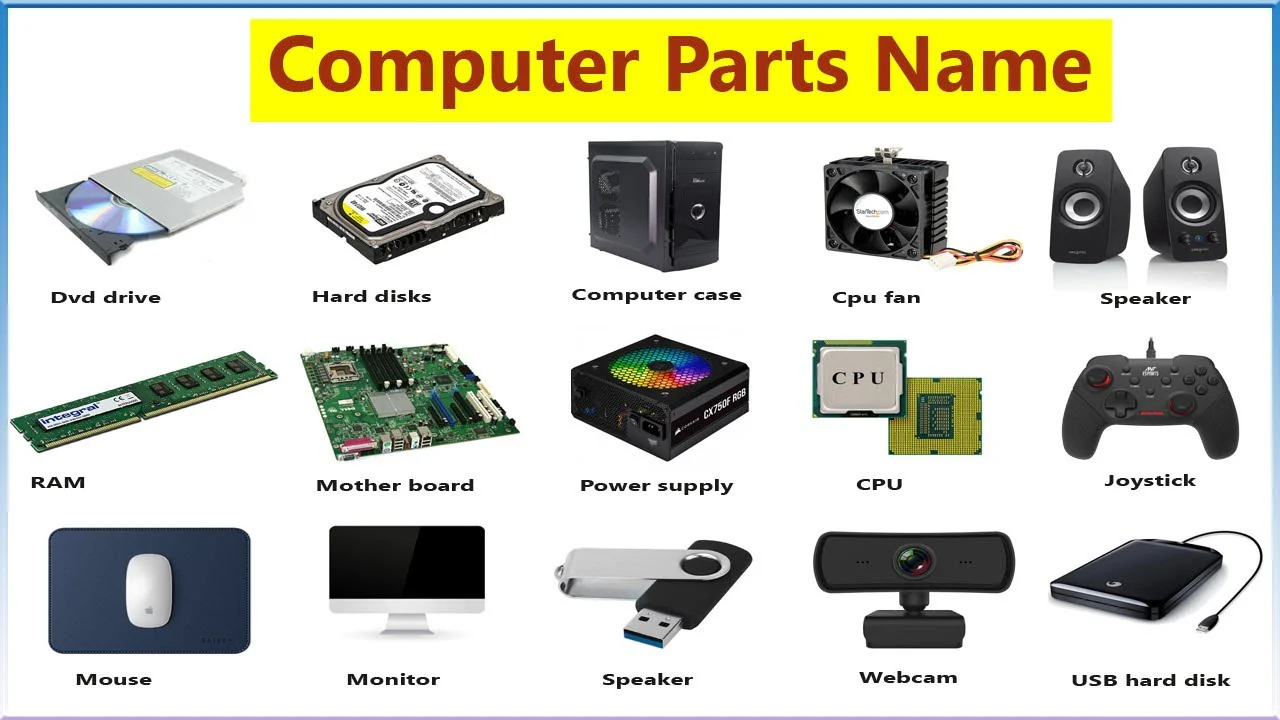A computer cabinet case (also known as a PC case or tower) houses and protects the internal components of a computer. Inside the cabinet, several essential parts are installed to make the computer function properly. Here’s a breakdown of the basic components typically found in a cabinet case:

1. Motherboard
About motherboard in a more detailed way
- Function: The motherboard is the main circuit board that connects all the components. It holds the CPU, memory, and expansion cards and provides connectors for other peripherals.
- Location: It is mounted directly inside the cabinet case and usually placed on one of the sides.Basic Computer Parts

2. Central Processing Unit (CPU)
- Function: The CPU is the brain of the computer. It processes instructions and handles tasks for all the programs and applications.
- Location: Installed in the socket on the motherboard, often near the center.
3. Random Access Memory (RAM)
- Function: RAM is the short-term memory of the computer. It temporarily stores data that the CPU is actively using, enabling fast access.
- Location: RAM sticks are slotted into the memory slots on the motherboard.
4. Power Supply Unit (PSU)
- Function: The PSU converts electrical power from the outlet into usable power for the internal components. It supplies electricity to the motherboard, drives, and other parts.
- Location: Typically mounted at the bottom or top of the case.
5. Storage Devices (Hard Drive or SSD)
- Function: These devices store your data permanently. There are two main types of storage: HDD (Hard Disk Drive) and SSD (Solid State Drive).
- Location: Mounted in dedicated drive bays inside the case.
6. Graphics Processing Unit (GPU)
- Function: The GPU handles rendering images, videos, and animations, especially for gaming or graphics-intensive tasks.
- Location: Plugged into the PCIe slot on the motherboard. It may have its own fans for cooling.
7. Cooling System (Fans and Heatsinks)
- Function: These components prevent the internal parts from overheating. They may include case fans, CPU coolers (heatsinks), and liquid cooling systems.
- Location: Fans are typically placed at the front, back, or top of the case. The CPU cooler is directly attached to the CPU on the motherboard.
8. Expansion Cards
- Function: These are additional components like sound cards, network cards, or additional USB ports, which expand the computer’s capabilities.
- Location: Installed in expansion slots (PCIe) on the motherboard.
9. Cables
- Function: Various cables connect power and data between components. Examples include power cables for the motherboard, SATA cables for storage drives, and data cables for other peripherals.
- Location: Neatly arranged inside the case, often routed through dedicated spaces to improve airflow and appearance.
10. Case Ports and Buttons
- Function: The case typically has external ports like USB, audio jacks, and power/reset buttons for user interaction.
- Location: These are located on the front or top panel of the case for easy access.
Together, these components form the essential hardware of a computer system inside the cabinet case. Proper arrangement and cooling ensure that the system runs efficiently.
Latest Contents